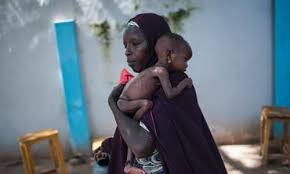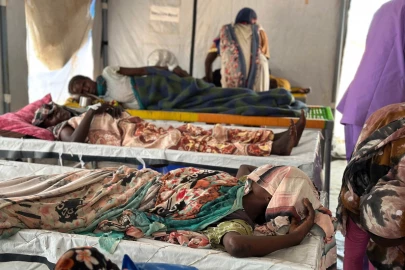In the first six months of 2025, at least 652 children died of malnutrition in Nigeria’s northern state of Katsina a crisis that health workers say could have been prevented. The deaths were reported by Médecins Sans Frontières (Doctors without Borders), also known as MSF, who have been providing emergency care in the region.
The cause? A dangerous mix of funding cuts, worsening insecurity, and government inaction.
“We are witnessing massive budget cuts from key international donors like the United States, United Kingdom, and European Union. This is directly affecting how many children we can save,” MSF said in a statement.
Numbers That Should Shock the World, from January to June 2025, 70,000 children in Katsina were treated for malnutrition by MSF, Nearly 10,000 of those were in critical condition and 652 children died despite receiving care.
The number of children suffering from severe acute malnutrition in Katsina has increased by 208% compared to the same time last year, according to MSF data.
The root causes of malnutrition in Nigeria’s north are complex, but tragically predictable:
Armed conflict and insecurity: Ongoing violence, especially from so-called “bandit” groups, has forced families from their homes and farms, disrupting food production and access.
Disease outbreaks: Due to poor vaccine coverage and weak healthcare services, preventable diseases further weaken children already suffering from hunger.
Poverty and displacement: Many families have lost their livelihoods and now live in makeshift camps with little or no support.
Global funding for humanitarian aid has been drying up with deadly consequences.
On July 24, the World Food Programme (WFP) warned it would suspend food and nutrition support for 1.3 million people in northeast Nigeria by the end of the month. Their food stocks are gone, and new money hasn’t arrived.
The WFP says this means, 300,000 children are at risk of severe malnutrition, 700,000 displaced people will have no food and 150 nutrition clinics in the conflict-torn state of Borno may close.
“This is a heartbreaking reality,” said WFP’s regional chief, Margot van der Velden.
Humanitarian work in Nigeria has long depended on support from the US Agency for International Development (USAID). But in recent years, especially under the Trump administration, foreign aid budgets have been slashed. USAID itself has been significantly downsized, accused by U.S. politicians of waste and pushing liberal policies.
Other Western nations have followed suit, cutting international assistance even as needs rise.
To fill the gap, Nigeria’s government announced it would allocate 200 billion naira (around $130 million) to support the health sector this year. But experts say that’s far too little, too late—especially given the scale of the emergency.
Despite the scale of the suffering, the hunger crisis in Nigeria gets far less international attention than it deserves.
“This is not just about funding,” said an MSF field worker. “It’s about political will, forgotten children, and a humanitarian system stretched to the breaking point.”
Children in Katsina and across northern Nigeria are dying quietly, in remote clinics and underfunded hospitals, far from the global spotlight.
What Needs to Happen Now, immediate emergency funding from donors to restore food and medical support.
Stronger security to allow farmers and families to return to their land.
Expanded healthcare and vaccination programs in northern states.
A long-term commitment to end child malnutrition—not just when the headlines demand it.
“We cannot continue to bury children because the world is too distracted or too divided to care,” said one Nigerian nurse working with MSF.
This is not a famine caused by drought or crop failure. This is a man-made crisis, driven by neglect, violence, and the choices of those with power. The world has the money, the medicine, and the food to stop it.



